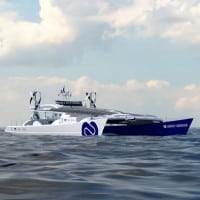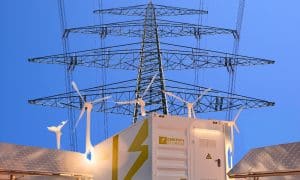In 2017, a high-tech ocean vessel powered by the sun, wind and sea water will start a 6 year journey; during which it will visit 50 countries – including Australia.
Originally built in Canada in 1983 by naval architect Nigel Irens, the maxi-catamaran Energy Observer has been lengthened four times and now measures 30.5 meters long and 12.80 meters wide.
Powering the vessel’s electronics and propulsion are 130 square meters of solar panels, two vertical axis wind turbines, two electric motors and equipment for electrolysis, which will use sea water to create hydrogen fuel. In a nod to a more traditional form of nautical propulsion, the craft will also be rigged with a kite sail.
During favourable weather, batteries charged by wind and solar energy will power the electric motors and also provide the power for electrolysis to create the hydrogen. In unfavourable conditions and at night, the stored hydrogen fuel will be used, via a fuel cell.
A fuel cell converts chemical energy into electricity through a reaction of positively charged hydrogen ions with oxygen or another oxidizing agent.

The use of sea water to power a vessel in such a way will be a world-first.
“This research and development is part of the Energy Observer project, to demonstrate the performance of this new energy model and thus serve as an example throughout the world,” says the team’s web site.
A team of close to 50 passionate people are currently working on the project.
You can read more about the Energy Observer project here (but you might need the assistance of Google Translate).
In other solar/nautical related news, the Mayflower Autonomous Ship (MAS) project is still proceeding and has been fully funded by a crowdfunding campaign that raised £100,000 by the middle of last month.
Mayflower will be an autonomous scientific research vessel measuring 32 metres in length and displacing 26 tonnes. The twin-sail craft will have a top speed of around 15 knots and deck mounted solar panels to supply power for the hybrid propulsion system.
“The vessel is to be powered by renewable energy and where necessary compliant with maritime regulations,” says the MAS team. “The vessel is to have undergone an extensive sea trial period and be ready to participate in the Mayflower 400 Commemorations in 2020.”
After the Atlantic crossing, the MAS will go on to circumnavigate the world.

















































